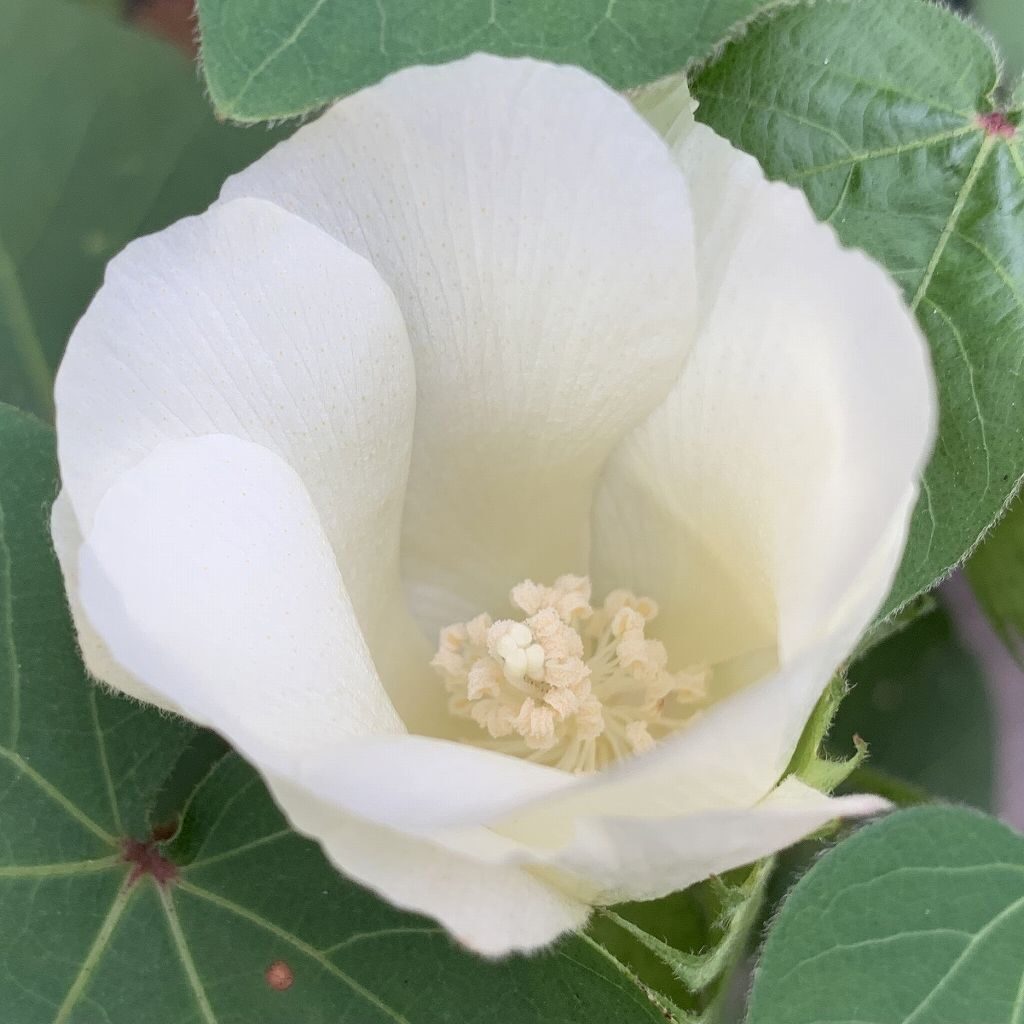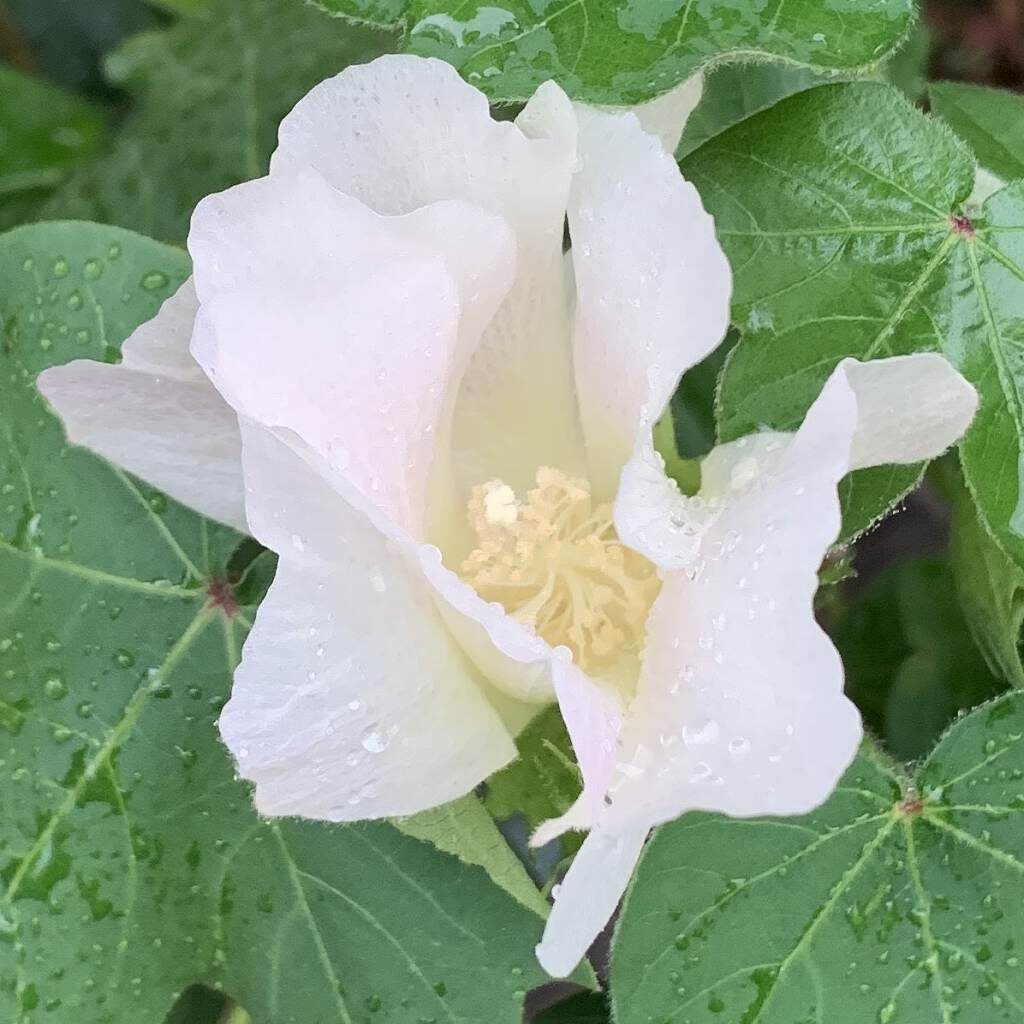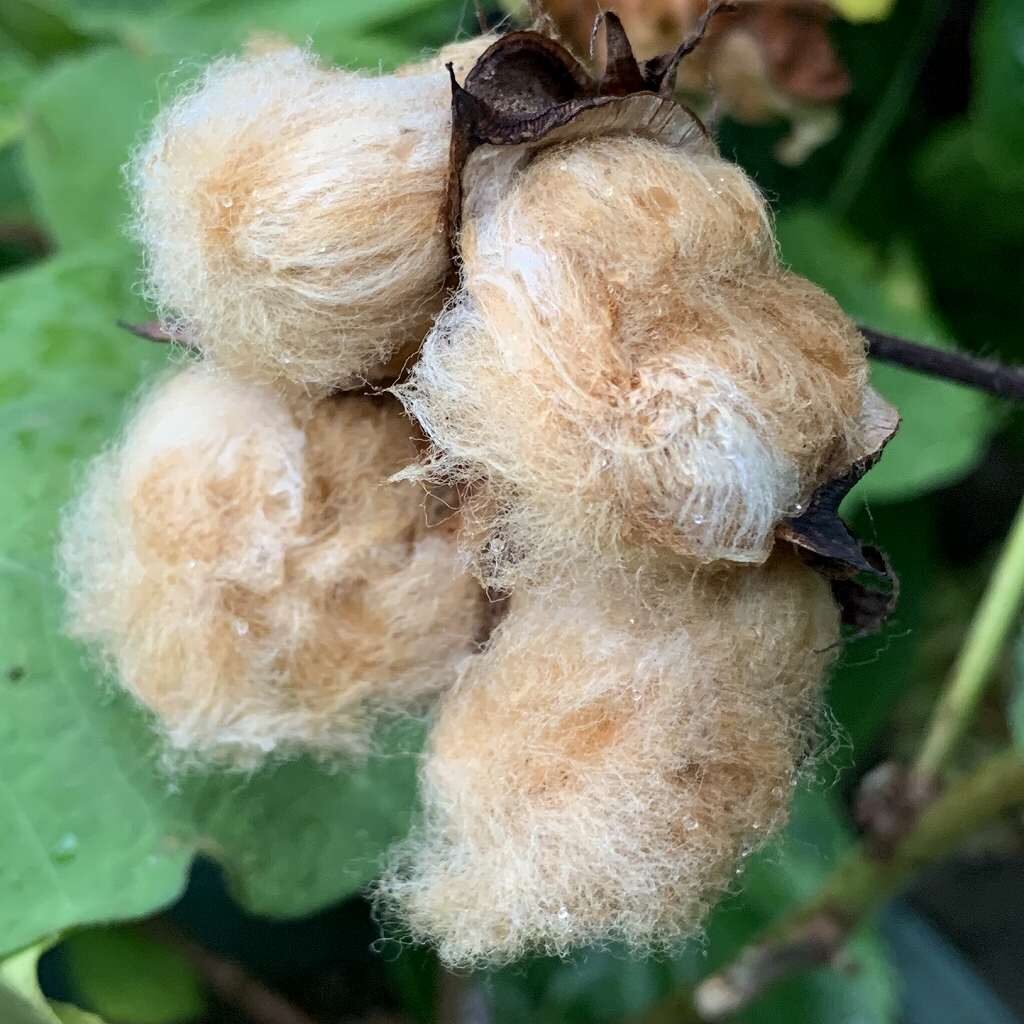ワタは朝方に咲いて夕方に萎む1日花。花後に蒴果が裂開して現れる綿毛の生えた種子は、花のように見えることから「綿花」と呼ばれます。
Cotton is a one-day flower that blooms in the morning and wilts in the evening. The cotton seeds are called “cotton flower” in Japanese because they look like flowers.
【仮名】ワタ, メンカ
【和名】綿, 綿花
【英名】Cotton, Cotton Flower
【学名】Gossypium
【誕生】08/ 30, 10/ 18, 10/ 21, 12/ 12
【開花】07, 08, 09月
【花色】White, Pink, Yellow



ワタ
ワタの来歴
ワタはアオイ科の1年草または多年草。原産地は中南米と西アフリカで、それぞれ別々に栽培が始まりました。このうち西アフリカ由来の系統が日本に伝わり、16世紀から栽培が本格化。そして蚕の繭からとれるのが「真綿」、ワタの実からとれるのが「木綿」と呼び分けられました。
ワタの名前
ワタの和名の由来は昔、衣類に詰めて使われるところが、内臓を意味する「わた」のようだったから。漢字は「糸」と「白」と「布」からなる会意文字です。英名のコットンはアラビア語で「良質な繊維」という意味。ラテン語の属名ゴシピウムは「腫れ物」で、実綿を表しています。
ワタの姿形
ワタは朝方に咲いて夕方に萎む1日花。花弁は白色から黄色、桃色まで幅があるものの、いずれも時間とともに桃色へと変わります。花後は緑色の蒴果を結び、熟すと褐変して裂開。中から綿毛の生えた種子が現れて膨らみ、それが花のように見えることから「綿花」とも呼ばれます。
白花綿と木立綿
ワタの原産地がエチオピア南部の系統は、花が黄色~白色で、実の繊維が短め。西アジアに伝わったヘルバケウム種の「白花綿」は草丈の高い1年草です。一方、南アジアに伝わったアルボレウム種の「木立綿」は多年草。いずれも東南アジアに広がり、「アジア綿」とも呼ばれます。
海島綿と陸地綿
ワタの原産地が中南米の系統は、花の真ん中が赤紫色で、実の繊維が長め。カリブ海域に伝わったバルバデンセ種の「海島綿」は1年草で、アフリカに広がります。一方、メキシコなどで栽培されていたヒルスツム種の「陸地綿」は米国に伝わって大規模栽培。世界中に広がりました。
ワタの利用
ワタは、綿毛をつけたままの種子が「実綿」で、種子を除いた「繰綿」が綿糸や綿織、脱脂綿や充填材などに利用されます。一方、綿毛を除いた種子の「綿実」は圧搾や溶媒抽出で採油され、食用油や石鹸に。残った油粕も飼料や肥料になり、最後まで無駄なく使える有用な植物です。
Cotton
Cotton is an annual or perennial plant of the Malvaceae family. It is native to Central and South America and West Africa, where cultivation began separately. Of these, the West African strain was introduced to Japan, and full-scale cultivation began in the 16th century. The material obtained from the cocoons of silkworms was called “true cotton”, and the material obtained from cotton seeds was called “tree cotton”.
The origin of the Japanese name “Wata” comes from the fact that it used to be stuffed into clothing in the past, and it looked like “Wata”, which means internal organs. Kanji of Cotton is a ideogram consisting of “thread”, “white” and “cloth”. The English name Cotton means “fine textile” in Arabic. The Latin genus name Gossypium means “swell”, which means seed cotton.
Cotton is a one-day flower that blooms in the morning and wilts in the evening. The petals vary from white to yellow to pink, but they all change to pink over time. After flowering, it bears green capsules, which turn brown and dehiscence when ripe. It is also called “cotton flower” in Japanese because the seeds with fluffy hair appear from inside and swollen it looks like a flower.
The lineage of cotton originating from southern Ethiopia has yellow to white flowers and short fruit fluff. The Herbaceum species “Levant cotton” introduced to West Asia is a tall annual plant. On the other hand, the Arboreum species “Tree cotton”, which was introduced to South Asia, is a perennial plant. All of them spread to Southeast Asia and are also called “Asian cotton”.
Cotton lineages originating in Central and South America have reddish-purple flowers in the center and long fruit fluff. Barbadense species “Sea Island cotton” is an annual plant that was introduced to the Caribbean Sea and spread to Africa. On the other hand, Hirsutum “Upland cotton” cultivated in Mexico and other countries was brought to the United States and cultivated on a large scale. spread all over the world.
The seeds of Cotton with fluff attached are called “seed cotton”, and the “ginned cotton” after removing the seeds is used for cotton threads, cotton fabrics, absorbent cotton, fillers, etc. On the other hand, the “cotton seed” of the seeds without the fluff is extracted by pressing or solvent extraction, and it is used as edible oil and soap. The remaining oil cake can also be used as feed or fertilizer, making it a useful plant that can be used without waste until the end.


